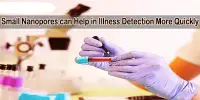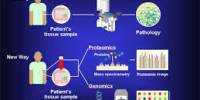Although being harmful in large doses, selenium is a micronutrient that is vital to human health. Yet, recent biological studies have demonstrated that selenium, when given in large levels, has anti-cancer capabilities.
To overcome problems with its inherent toxicity, an international research team, led by Professor Steve Conlan in Swansea University and Professor Laurent Charlet at Université Grenoble Alpes, tested whether selenium nanoparticles could be developed as a potential cancer treatment. Their findings have just been published in the journal Redox Biology.
The researchers showed that the selenium nanoparticles killed ovarian cancer cell models generated in 3D to mimic the natural tumor environment very efficiently.
Scientists later found a brand-new molecular mechanism that explains how selenium is probably responsible for this anti-cancer action. They discovered that selenium alters the function of enzymes known as histone methylatransferases.
This is one of those quite rare moments when you realize the team have made a novel biological discovery. Noor and Benoit are incredibly talented scientists, and only through their skill and dedication were we able to make this advance. The Swansea-Grenoble partnership demonstrates clearly how international and interdisciplinary partnerships lead the way in scientific discovery.
Professor Steve Conlan
These enzymes control the processes by which environmental factors can change how genes function. In contrast to genetic mutations, which cannot be reversed, epigenetic modifications alter how your body interprets DNA sequences.
This research was carried out by Dr. Benoit Toubans, as part of his joint Ph.D. project supported by the Swansea-Grenoble strategic partnership, and Dr. Noor Al Kafri, a CARA fellow in Professor Conlan’s laboratory, together with collaborators at the synchrotron facility in Grenoble and the University of Stuttgart.
Professor Conlan, who heads the Reproductive Biology and Gynecological Oncology group at Swansea University Medical School, described the project as a tremendous scientific research effort.
“This is one of those quite rare moments when you realize the team have made a novel biological discovery. Noor and Benoit are incredibly talented scientists, and only through their skill and dedication were we able to make this advance. The Swansea-Grenoble partnership demonstrates clearly how international and interdisciplinary partnerships lead the way in scientific discovery.”
The research team says it is now critical to take into account both the traditional antioxidant and unique histone methylation effects of selenium and its development as a cancer therapeutic. They are hopeful that this discovery will bring fresh insights into the activity of selenium nanoparticles.
















